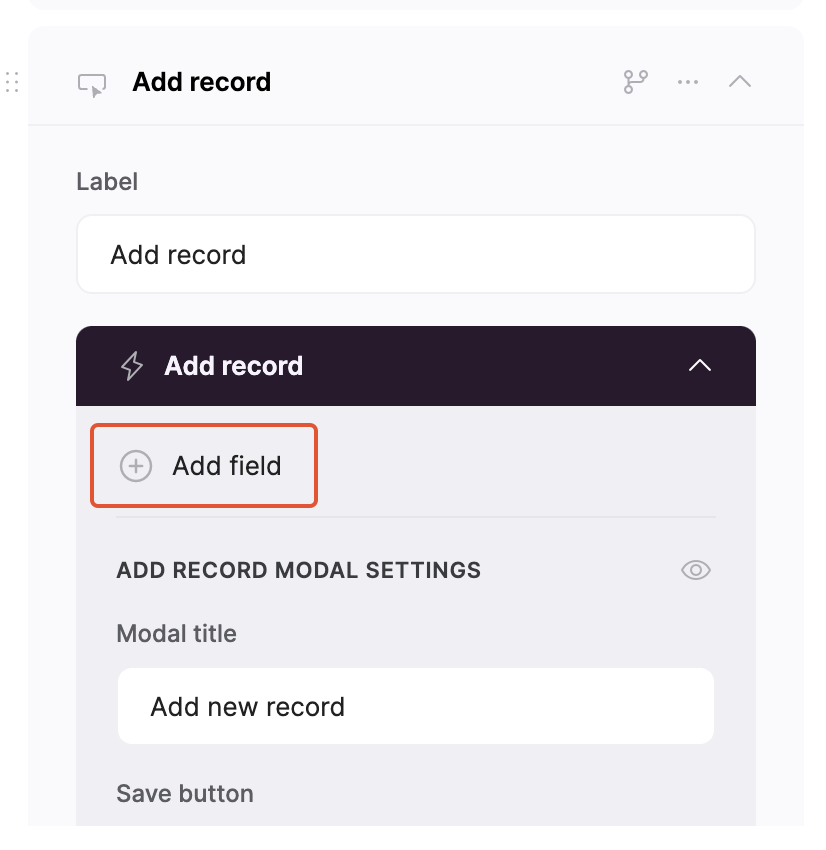
Add field button

Mapping the field
Hidden Fields

Hidden field under Add Record action
1. Logged-in user
By default, here, you have the following options:- Email. Collects the email address of the logged-in user.
- Name. Collects the name of the logged-in user.
- Record ID. If you’ve connected a data source to your users database, you can choose this option to collect the Record ID (you can learn about Airtable Record IDs here, and learn how those work for Google Sheets here) of the user.
2. URL Parameter
Using this option, you can collect any of the page’s URL parameters. Let’s consider a specific example to see how that works. For instance, if you’ve created a job board with Softr, each job announcement will have a recordId (you can learn about Airtable Record IDs here, and learn how those work for Google Sheets here) in its page URL, indicating the data source record corresponding to that particular job. So, if you have an action button on the job announcement page, you can set a hidden field to collect the recordId to identify which job announcement the action has been submitted for. Your page URL will look something like yoursite.com/job-details/senior-product-manager?recordId=rec7HcXAgKmlk8inf, so if you set your hidden field value as “recordId,” it will collect the value of recordId (“rec7HcXAgKmlk8inf” in this case).3. Page URL
This parameter allows to get the full URL of the page the button has been submitted from.4. Custom value
Here’ you can collect any custom value that you’re not able to collect using the previous options. For instance, you can use it to collect a custom text along with the submission. This can be useful if you have the same form on different pages and want to mark each of the forms distinctively. Another important use case is collecting additional logged-in user parameters. If you’ve synced your users database with a data source, you can use this option to collect any of the field values corresponding to the user. Here, the value has the following format: {LOGGED_IN_USER:‘field name’} (‘field name’is replaced with the actual name of the field). Let’s say you have connected an Airtable data source and have a Status field in your users base as shown below.
Users base on Airtable